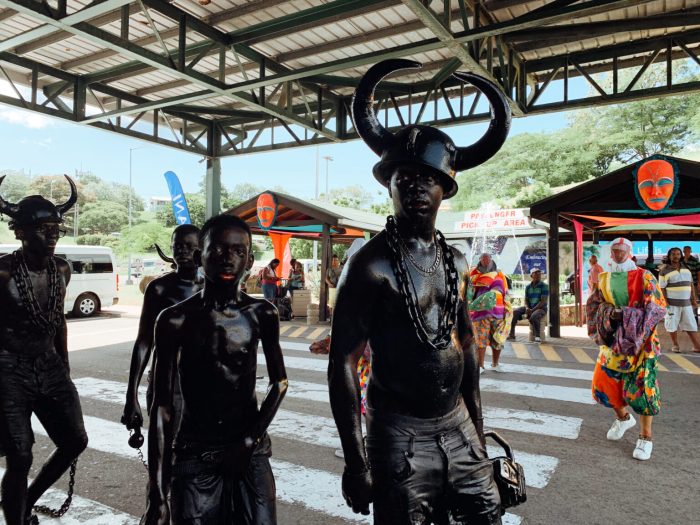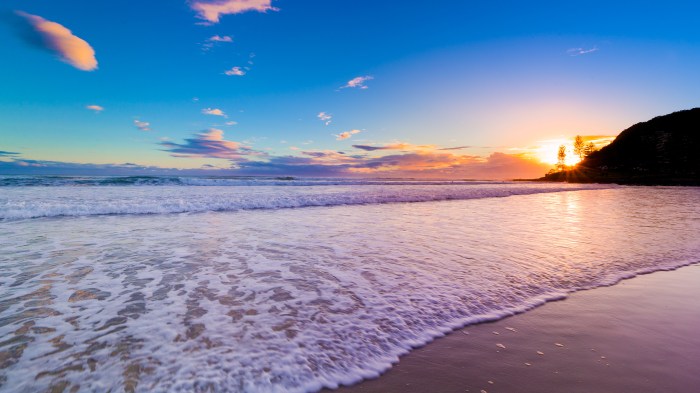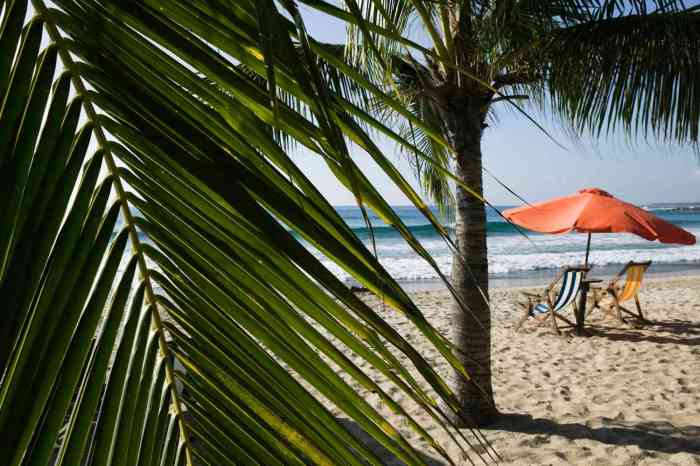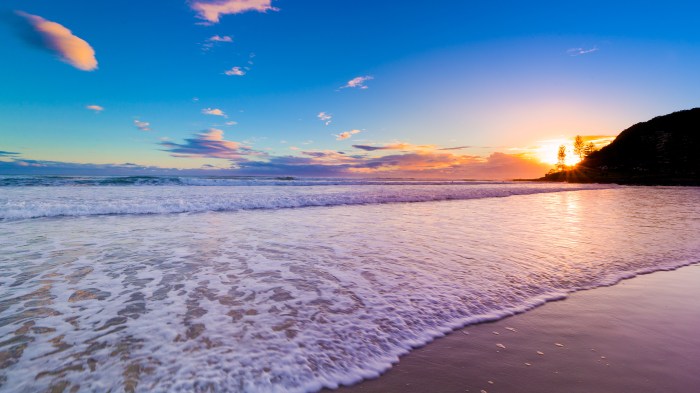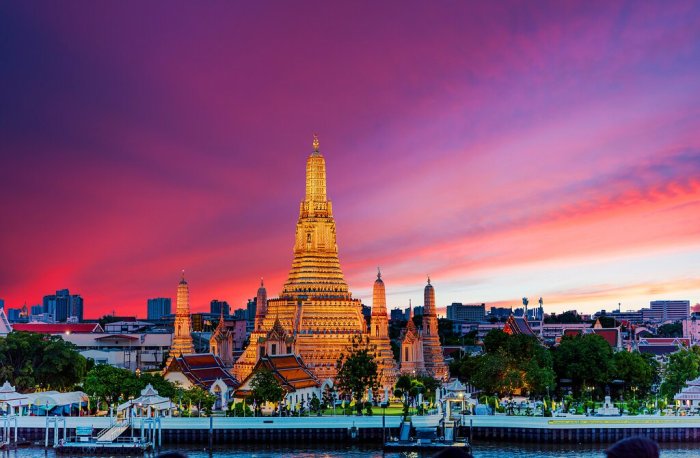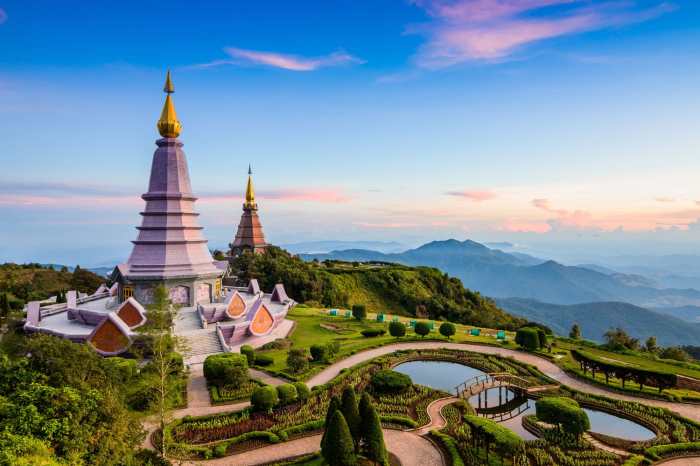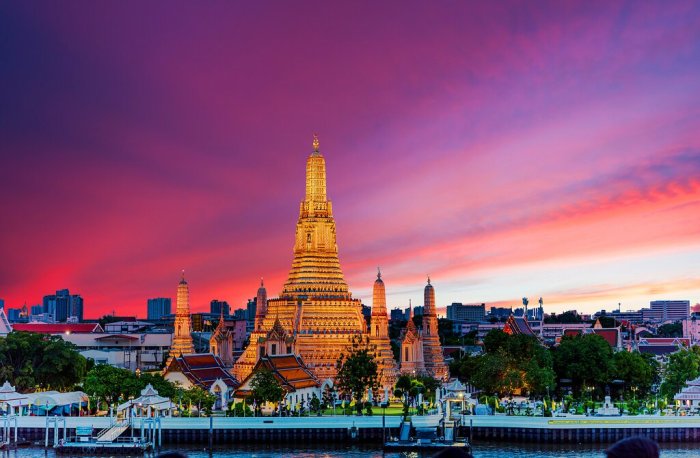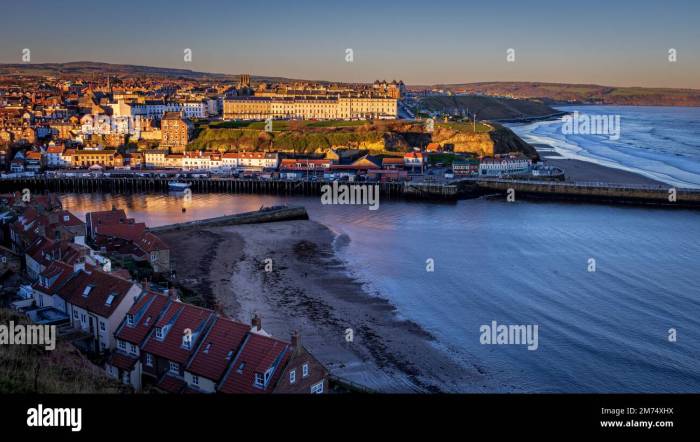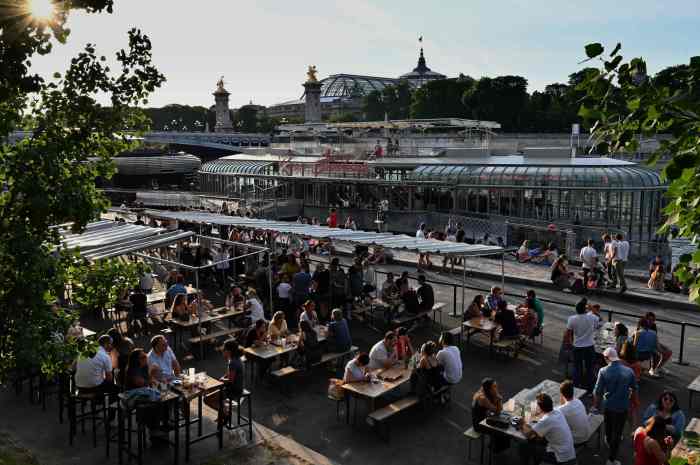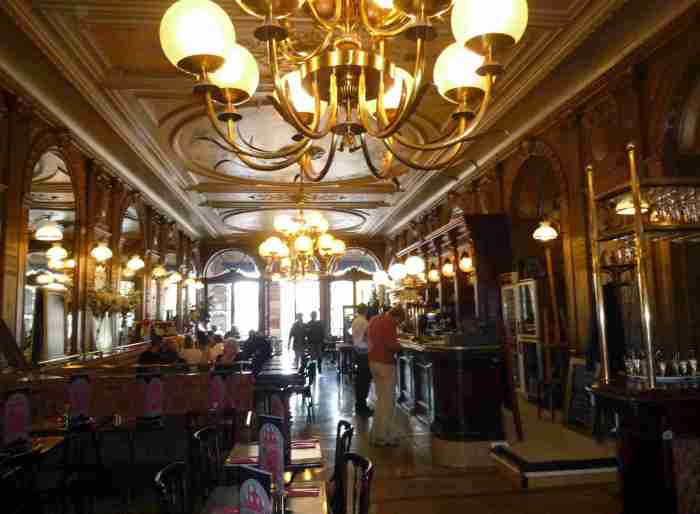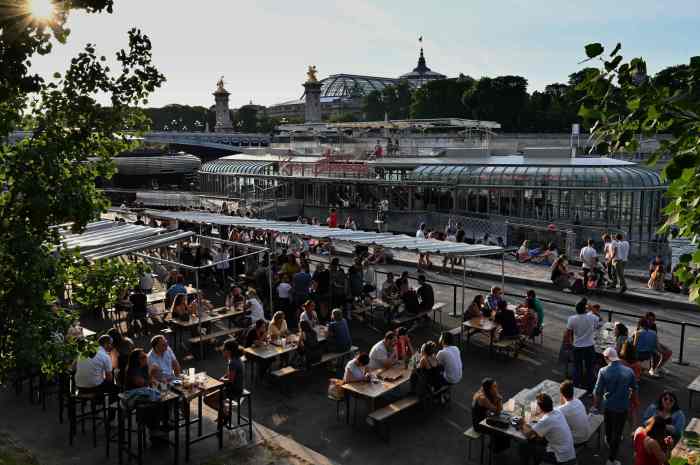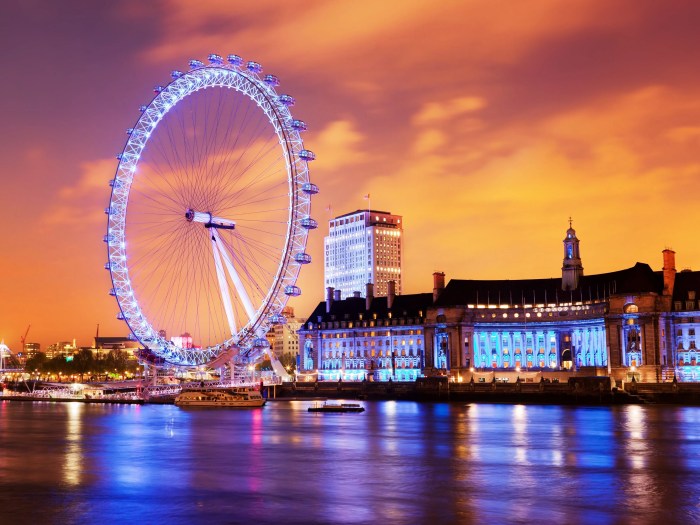Guide to Grenada Spicemas plunges you into the vibrant heart of this Caribbean festival. Experience the rich history, vibrant culture, and electrifying energy of Grenada’s annual celebration of music, dance, and costumes. From the festival’s origins to the latest happenings, we’ll guide you through the essential elements of Spicemas, providing a complete understanding of this iconic event.
This comprehensive guide will cover everything from the historical context of Spicemas to practical tips for planning your visit. Discover the captivating traditions, the thrilling competitions, and the delicious culinary delights that make Spicemas a truly unforgettable experience. Learn how to navigate the festival, maximize your enjoyment, and get the most out of your trip.
Introduction to Grenada Spicemas
Grenada’s Spicemas is a vibrant celebration of culture, creativity, and community. More than just a carnival, it’s a powerful expression of Grenadian identity, rooted in the island’s history and the resilience of its people. It’s a time for revelry, showcasing the rich tapestry of traditions and showcasing the spirit of the Grenadian people.Spicemas is a significant cultural event, marking the transition from the end of the harvest season to the start of the new agricultural cycle.
It embodies a deep-seated connection to the land and the hard work of the people who cultivate it. The festival is a time for community members to come together, sharing in the joy and excitement of the celebration.
Historical Background of Spicemas
Spicemas evolved from a combination of pre-existing celebrations and post-colonial influences. Originally, these were gatherings tied to agricultural cycles and the harvest. The name itself, a blend of “spice” and “mas,” reflects the island’s historical importance as a source of exotic spices. Over time, elements of European and African traditions merged, shaping the festival into the colourful spectacle it is today.
Key milestones include the gradual integration of elements like masquerades and parades, evolving into the elaborate displays seen in modern Spicemas. The festival, as it stands, reflects a blend of cultures, a testament to Grenada’s rich history and multicultural heritage.
Components of the Festival
The Grenada Spicemas festival encompasses a wide range of components, each playing a crucial role in the overall celebration. These elements work together to create a dynamic and unforgettable experience.
- Costumes: Elaborate costumes, often featuring intricate designs and vibrant colours, are a hallmark of Spicemas. These are a powerful expression of creativity, showcasing the skills of local artisans and designers. The costumes reflect Grenadian heritage, incorporating elements from the island’s history, nature, and traditions.
- Music and Dance: Music and dance are integral to the festival’s rhythm and energy. A diverse range of musical styles, including calypso, soca, and traditional folk music, creates a vibrant atmosphere. Dance performances showcase the island’s diverse cultural heritage, and often tell stories through movement and rhythm.
- Parades and Competitions: Parades featuring elaborate costumes and musical performances are a central feature. Competitions in various categories, like costume design and calypso singing, further enhance the competitive spirit and showcase artistic talent.
Participants and Performers
Spicemas welcomes a wide range of participants and performers. This broad spectrum reflects the inclusive nature of the festival.
Planning a trip to Grenada’s Spicemas? A great guide is essential, but did you know that exploring the best neighborhoods in Hong Kong, like best neighborhoods in hong kong , can offer unique insights? Their vibrant energy and diverse cultures mirror the vibrant spirit of Spicemas, with a focus on celebration and community. So, a guide to Grenada’s Spicemas will help you navigate the best ways to experience this incredible festival.
- Individuals and Groups: The festival attracts individuals and groups from all walks of life, from seasoned performers to enthusiastic newcomers. This inclusion ensures that everyone can participate and enjoy the celebration.
- Costumiers and Designers: The creative talent of local costumiers and designers plays a significant role. Their skill and dedication contribute to the impressive array of costumes that are showcased during the festival.
- Musicians and Dancers: Musicians and dancers contribute their talents to create a vibrant and exciting atmosphere. Their performances are a vital part of the festival’s energy and cultural expression.
Overview of Events
| Event Name | Description | Date | Location |
|---|---|---|---|
| Grand Parade | The highlight of the festival, featuring elaborate costumes, music, and dance performances. | Typically in the last week of the celebration. | Various locations across Grenada, culminating in a grand finale. |
| Calypso Competition | A competition showcasing the talent of local calypso singers. | Usually during the festival’s run. | Designated venues throughout the festival. |
| Costume Competition | A showcase of creativity and artistry, featuring a wide range of costume designs. | During the festival’s run. | Designated venues throughout the festival. |
| Soca Performances | Performances of popular soca music, adding to the energetic atmosphere. | Various times throughout the festival. | Various locations across Grenada. |
Festival Activities and Events: Guide To Grenada Spicemas
Spicemas, a vibrant celebration of Grenada’s culture and heritage, is more than just a parade. It’s a multifaceted extravaganza filled with music, dance, costumes, and competitions that showcase the island’s rich traditions and artistic talent. The festival’s energy is palpable, drawing participants and spectators alike into a kaleidoscope of colours and sounds.The various events and competitions within Spicemas are carefully interwoven to create a narrative that celebrates the spirit of the people and the island’s unique identity.
From the colourful costumes to the pulsating rhythms of the music, every element contributes to the overall spectacle.
Main Activities and Events
The heart of Spicemas beats with a rhythm of diverse activities. Each event plays a crucial role in the festival’s narrative, showcasing different facets of Grenadian culture. The grand parade, a spectacular display of creativity and artistry, is a highlight, followed by the vibrant music and dance competitions that celebrate the island’s rich musical heritage.
Types of Competitions
Spicemas boasts a range of competitions, each reflecting a specific aspect of Grenadian artistry and talent. Costumes are meticulously crafted, reflecting themes and traditions. The music competitions feature diverse genres, highlighting the talent of local musicians. Dance competitions showcase the rhythm and grace of Grenadian performers, each event contributing to the overall cultural tapestry of the festival.
Significance of Each Event
The significance of each event lies in its ability to showcase the collective creativity and cultural heritage of Grenada. The costume competitions are a testament to the island’s rich history and vibrant imagination. The music competitions provide a platform for local artists to showcase their talents and share their musical traditions. The dance competitions are a visual expression of the rhythm and spirit of Grenada, each event embodying the soul of the island.
Key Locations
Spicemas unfolds across several key locations, each playing a significant role in the festival’s dynamic atmosphere. The heart of the celebrations often takes place in the capital city, St. George’s, where the parade route is lined with enthusiastic spectators. Various venues host the music and dance competitions, adding to the festival’s broad reach.
Event Schedule
| Activity | Description | Time | Venue |
|---|---|---|---|
| Grand Parade | A colourful procession showcasing elaborate costumes and music. | Typically held on a specific day(s). | Designated parade route through St. George’s. |
| Music Competitions | Different musical genres compete for awards. | Various times throughout the festival. | Specific venues within St. George’s. |
| Dance Competitions | Groups showcase their choreographed routines and styles. | Various times throughout the festival. | Designated venues within St. George’s. |
| Costume Competitions | Participants present elaborate and creatively designed costumes. | Various times throughout the festival. | Specific venues within St. George’s. |
Cultural Significance and Impact
Spicemas, Grenada’s vibrant celebration of cultural heritage, transcends a simple festival. It’s a powerful expression of national identity, a vibrant tapestry woven from the threads of tradition and innovation. The festival’s profound impact on the Grenadian people, from fostering community spirit to driving economic growth, is undeniable. It’s more than just a party; it’s a testament to the enduring strength and resilience of the Grenadian culture.The festival acts as a powerful reminder of the country’s unique blend of influences, reflecting its rich history and diverse traditions.
It showcases the island’s cultural heritage, highlighting the contributions of its people and preserving their traditions for future generations. This vibrant expression of national identity is a crucial part of Grenadian life, fostering a sense of pride and belonging.
Cultural Significance
Spicemas deeply resonates with the Grenadian people, embodying their cultural identity. It’s a celebration of the diverse cultural heritage that shapes the island nation. The festival serves as a vital platform for preserving and promoting the nation’s traditions. The blending of African, European, and Asian influences, evident in the music, dance, and costumes, is a key element of Spicemas’s cultural significance.
Role of Music, Dance, and Costumes
Music, dance, and costumes are essential components in conveying the rich cultural messages of Spicemas. The vibrant music, often a fusion of calypso, reggae, and other genres, reflects the cultural diversity of the island. The rhythmic beats and melodies tell stories, express emotions, and evoke a sense of unity. Traditional and contemporary dance styles, each with its unique movements and expressions, add another layer to the celebration, showcasing the artistry and skill of the performers.
Costumes, often elaborate and colourful, are a powerful visual representation of the island’s cultural heritage. The intricate designs and vibrant colours symbolize the various traditions and histories that have shaped the island.
Impact on Tourism and the Local Economy
Spicemas is a significant driver of tourism in Grenada. The vibrant atmosphere, colourful costumes, and exciting performances attract visitors from around the world. This influx of tourists generates revenue for local businesses, including hotels, restaurants, and transportation services. The festival’s economic impact extends beyond direct tourism revenue, supporting various industries and contributing to overall economic growth. The revenue generated through Spicemas often funds further development and improvements in infrastructure and cultural projects.
Fostering Community Spirit and Unity
Spicemas is more than just a festival; it’s a powerful catalyst for community spirit and unity. The event brings together people from all walks of life, creating a sense of shared experience and belonging. The vibrant atmosphere and collaborative spirit of the festival are instrumental in strengthening social bonds and fostering a strong sense of community. The participation of all segments of the Grenadian society, including young people and older generations, exemplifies the festival’s unifying power.
Through shared experiences and celebrations, Spicemas reinforces a sense of collective identity and fosters mutual respect.
Planning a trip to Grenada for Spicemas? I’ve got a fantastic guide to help you navigate the festivities. While you’re saving up for the vibrant celebrations, don’t miss out on great deals on hotels. For example, you can check out some amazing Hyatt Summer Lock Sale deals to make your trip even more affordable. This is a perfect opportunity to secure your accommodations for the Spicemas experience.
My guide will cover everything from the best places to stay to the must-see events during the festival.
Preparing for Spicemas
The vibrant energy of Grenada’s Spicemas festival is a testament to the meticulous preparation that goes into each aspect of the celebration. From the intricate costumes to the rhythmic beats of the music, every element is carefully crafted and rehearsed to create a spectacular display of Grenadian artistry and culture. The months leading up to the festival are a whirlwind of activity, filled with the dedicated efforts of participants across various roles.
Costume Design and Construction
Costume design and construction are central to the Spicemas experience. The elaborate costumes, often depicting historical figures, mythical creatures, or contemporary social commentary, are more than just clothing; they are powerful statements of identity and cultural pride. Skilled artisans dedicate countless hours to designing, pattern-making, and meticulously crafting these magnificent displays of textile artistry. The fabrics, often locally sourced and dyed, are meticulously chosen to reflect the vibrant colors and textures of Grenadian culture.
This artistic expression embodies the spirit of creativity and innovation within the community.
Preparation Steps
- Costume Design and Creation: Experienced designers and skilled seamstresses work diligently on sketches and patterns. They meticulously select fabrics, often locally sourced, and work with artisans to craft unique designs, often reflecting historical events or contemporary issues. The vibrant colors and elaborate details of the costumes showcase the richness of Grenadian heritage. For example, the costume of a mythical creature might feature intricate embroidery and shimmering sequins, while a costume representing a historical figure might include detailed replica of historical clothing and accessories.
Planning a trip to Grenada’s Spice Mas? This guide will help you navigate the vibrant festival, but if you’re looking for speedy travel options, check out trip ideas bus train fastest trains in the for some excellent ideas on getting around. From finding the best spots to experience the local culture to knowing when the parades are, this guide will help you make the most of your time there!
- Musical Rehearsals: Musicians and drummers spend countless hours practicing their rhythms and melodies, ensuring a seamless performance during the festival. This meticulous preparation, along with the traditional instruments and rhythmic beats, creates the dynamic energy that drives the festival. Each musician and drummer plays a vital role in the overall musical experience, contributing to the unique soundscape of Spicemas.
The bandleader often coordinates the rehearsals to ensure precision and a synchronized performance during the festival.
- Dance Choreography and Rehearsals: Choreographers meticulously create routines, ensuring graceful movements and dynamic expressions. This process involves many hours of rehearsals, where dancers practice their steps and learn the nuances of the choreography, resulting in a visually captivating and engaging performance. Dancers learn the precise steps and movements to ensure a smooth and coordinated dance performance. This includes incorporating elements of local folklore, mythology, or contemporary events.
- Event Organization and Planning: A dedicated team of organizers works tirelessly to schedule events, manage logistics, and ensure smooth execution. The preparation process includes detailed planning of the various stages, including securing venues, arranging transportation, and coordinating the various events throughout the festival. This process often involves several meetings and collaborations with different stakeholders to ensure the festival runs smoothly.
Food and Drink
The vibrant energy of Spicemas isn’t just about music and dancing; it’s deeply intertwined with the delectable culinary traditions of Grenada. Food and drink are integral to the celebration, representing a significant part of the cultural heritage and communal experience. The festival provides a platform to showcase and savor the island’s unique flavors, from traditional dishes passed down through generations to innovative creations inspired by the celebration.The abundance of food and drink at Spicemas isn’t just about satisfying hunger; it’s about sharing stories, celebrating community, and connecting with the rich tapestry of Grenadian culture.
Each bite tells a tale, each sip evokes a memory. From the fragrant spices used in countless dishes to the sweet, refreshing drinks, the food and drink offerings at Spicemas are a testament to the island’s culinary prowess.
Traditional Grenadian Cuisine
Grenadian cuisine is renowned for its bold flavors, blending African, European, and Indian influences. Spicemas showcases this diverse heritage through a variety of dishes, many featuring the island’s famous spices. The use of fresh, local ingredients is paramount, emphasizing the connection between the land and the table. This focus on fresh produce is evident in dishes that utilize fruits, vegetables, and herbs.
Popular Foods and Drinks
The festival offers a wide array of delectable foods and refreshing drinks. Visitors and locals alike are treated to a sensory feast, with the aroma of spices and the taste of unique flavors filling the air.
- Callaloo Soup: A hearty soup made with callaloo leaves, a staple in Grenadian cuisine. This dish is often seasoned with tomatoes, onions, and spices. It is a traditional dish frequently found at celebrations and events across Grenada.
- Oildown: A flavorful and hearty stew made with beef or goat meat, vegetables, and spices. The rich flavors of Oildown make it a popular dish at the festival, providing a hearty meal for participants.
- Festival Breads: A variety of breads are offered, often incorporating local spices and flavors. These baked goods complement the savory dishes and provide a satisfying component to the food experience.
- Fresh Fruits and Vegetables: The abundance of fresh produce is a testament to the island’s fertile land. Fresh fruits like mangoes, papayas, and pineapples are often available in various forms, adding a refreshing element to the festival.
- Drinks: A selection of refreshing drinks, including juices, smoothies, and local beers, are available. The drinks are usually made with fresh ingredients, ensuring a healthy and refreshing experience for all participants.
Role of Food and Drink in the Celebration
Food and drink are central to the Spicemas celebration, serving as a way to bring people together and share in the festivities. They provide nourishment, but also symbolize the warmth and hospitality of Grenadian culture. The shared experience of savoring these delicious dishes and drinks fosters a sense of community and belonging.
Significance of Traditional Grenadian Cuisine
Traditional Grenadian cuisine is not just a part of Spicemas; it’s a cornerstone of the festival. The dishes reflect the island’s history and heritage, showcasing the blend of cultures that have shaped the nation. The recipes, passed down through generations, represent a vital connection to the past, highlighting the significance of food as a cultural touchstone.
Dishes at Spicemas
| Dish | Description | Origin | Ingredients |
|---|---|---|---|
| Callaloo Soup | A hearty and flavorful soup made with callaloo leaves. | Grenada | Callaloo leaves, tomatoes, onions, spices, and seasonings. |
| Oildown | A rich and savory stew made with meat, vegetables, and spices. | Grenada | Meat (beef or goat), vegetables (potatoes, carrots, onions), spices, and seasonings. |
| Festival Breads | Various breads with unique flavor profiles. | Grenada | Flour, spices, and local ingredients. |
| Fresh Fruits | A variety of fresh fruits from the island. | Grenada | Mangoes, papayas, pineapples, and other tropical fruits. |
Accommodation and Transportation
Getting to Grenada for Spicemas and finding suitable accommodation are crucial parts of the overall experience. This section will guide you through the options available, helping you plan your trip smoothly and enjoy the festivities to the fullest. The vibrant energy of Spicemas is amplified by the right environment, and the right choice of lodging and transport ensures a stress-free journey.Careful planning of your accommodation and transportation is vital for a smooth Spicemas experience.
This involves considering your budget, preferred location, and the logistics of getting around the island. Understanding the various options available will allow you to make informed decisions, ensuring you maximize your time at the festival.
Accommodation Options
Choosing the right place to stay is essential for enjoying Spicemas. Grenada offers a range of accommodation options to suit various budgets and preferences. From luxurious hotels to cozy guesthouses and affordable Airbnb rentals, you’re sure to find something that fits your needs.
- Hotels: Luxury hotels in Grand Anse and St. George’s provide a range of amenities and services, ideal for those seeking a comfortable and convenient stay. Many hotels offer packages that include meals, activities, and other perks, making your Spicemas trip even more enjoyable. Examples include the luxurious amenities of the Radisson Blu Resort, or the serene ambiance of the Spice Island Beach Resort.
- Guesthouses: Guesthouses offer a more intimate and personalized experience. They often provide a warm, local feel and can be a great option for those looking for a more affordable and authentic stay. These accommodations are often found in areas that offer easy access to the festival venues.
- Airbnb: Airbnb offers a wide variety of options, from apartments to villas, allowing you to choose a space that fits your needs and budget. These properties often provide kitchen facilities and comfortable living spaces, allowing for flexibility and independence. Airbnb also allows you to choose a location that suits your preferred proximity to the festival events.
Transportation Options, Guide to grenada spicemas
Getting around Grenada during Spicemas is straightforward. The island has a good network of roads, making it easy to explore different areas. Here are the common modes of transportation:
- Taxis: Taxis are readily available and a convenient way to get around the island, especially to and from the festival venues. Taxis are a practical and efficient way to travel between destinations.
- Rental Cars: Renting a car allows for greater flexibility in exploring the island and reaching various locations during the festival. However, traffic may be heavier than usual due to the large number of visitors.
- Public Transport: Grenada has a reliable public transportation system that can take you to different parts of the island. This is a budget-friendly option, but schedules may be less frequent compared to taxis or rental cars.
Logistical Considerations
Attending Spicemas requires careful planning. Book your accommodation and transportation in advance, especially if traveling during peak season. Consider the festival’s schedule and events to plan your itinerary accordingly. Check for potential traffic congestion and adjust your travel plans if necessary. Remember to factor in travel time between locations to ensure you arrive on time for events.
Recommended Accommodation Options
Here’s a table showcasing some accommodation options, considering location, price, and contact information:
| Accommodation | Location | Price | Contact |
|---|---|---|---|
| Radisson Blu Resort | Grand Anse | $$ | (Example) +1-473-440-1234 |
| Spice Island Beach Resort | St. George’s | $$ | (Example) +1-473-440-5678 |
| Cozy Guesthouse (Example) | St. George’s | $ | (Example) +1-473-440-9012 |
| Luxury Villa (Example) | Grand Anse | $$$ | (Example) +1-473-440-2222 |
Note: Prices are estimates and can vary based on season and availability. Contact details are examples.
Tips for Visiting Spicemas
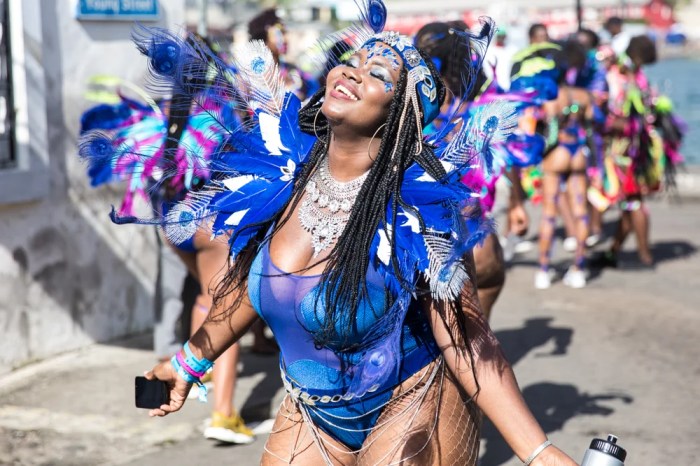
Grenada’s Spicemas, a vibrant celebration of culture and creativity, offers a unique experience for visitors. From the electrifying calypso competitions to the colourful costumes, there’s much to see and do. This section provides invaluable insights to ensure your Spicemas adventure is unforgettable.
Maximizing Your Spicemas Experience
Spicemas is more than just a parade; it’s a multi-faceted cultural immersion. To truly appreciate it, plan your time strategically. Attend the Grand Kadooment Day parade, which typically showcases the pinnacle of creativity and artistry in the costumes and floats. Consider visiting the various smaller events and activities that take place throughout the festival. This will allow you to witness the local energy and spirit that fuels the entire celebration.
Dress Code and Etiquette
Grenada’s Spicemas is a festive occasion, encouraging vibrant and colourful attire. The more colourful and creative your outfit, the better! Embrace the island spirit by dressing in bright colours and unique designs. Respect local customs and traditions. Be mindful of the environment, ensuring that any waste is properly disposed of. Remember to be respectful of the local population and their customs.
Safety and Security Considerations
While Spicemas is generally a safe event, it’s important to take precautions. Be aware of your surroundings and keep valuables secure. Utilize public transportation or taxis where possible to avoid issues with personal safety. Participate in the festivities responsibly. Be mindful of alcohol consumption, especially in large crowds.
Places to Visit in Grenada
Grenada offers a plethora of attractions beyond Spicemas. Explore the historic Fort George, which offers breathtaking views of the island. Visit the Grand Anse Beach for relaxation and stunning scenery. Take a boat tour to discover the hidden coves and beaches. Visiting the Spice Market before or after Spicemas is highly recommended to experience the rich aroma and diversity of Grenada’s spices.
The market’s vibrancy and the unique spices are an essential part of Grenada’s culture and identity.
Essential Tips for Planning Your Spicemas Trip
- Book accommodations and transportation in advance, especially if travelling during peak season. Popular hotels and rental cars may book up quickly, leading to higher prices.
- Purchase tickets for key events in advance, if possible. This can help to avoid long queues and ensure you can attend your chosen events.
- Pack light, comfortable clothing suitable for warm weather, as well as comfortable shoes for walking. Comfortable shoes are crucial for navigating the crowds and enjoying the events.
- Bring sunscreen, a hat, and sunglasses to protect yourself from the sun’s strong rays.
- Learn a few basic Creole phrases to enhance your interactions with locals. Learning a few basic Creole phrases will help you connect with the locals on a more personal level.
- Be prepared for crowds, particularly during peak times, and adjust your plans accordingly. Be aware of the crowds, and plan your activities accordingly.
- Respect the local customs and traditions. Understanding the local customs and traditions will help you have a more enriching experience.
Visual Representation
Spicemas in Grenada is a vibrant spectacle, a kaleidoscope of colours, rhythms, and movements. The festival’s visual appeal is deeply intertwined with its cultural significance, making it a truly memorable experience for all who witness it. The artistry of the costumes, the infectious energy of the music, and the powerful expression of the dance performances collectively create a captivating display of Grenada’s unique heritage.The visual elements of Spicemas are not just aesthetic; they are a powerful representation of the island’s history, its people, and their traditions.
Through carefully crafted costumes, rhythmic music, and expressive dance, the festival celebrates the island’s multicultural roots and its spirit of unity.
Costumes
The costumes at Spicemas are a dazzling array of colour and craftsmanship, embodying the rich cultural heritage of Grenada. Each costume tells a story, showcasing intricate designs and unique features that are deeply symbolic of the island’s past and present.
“Costumes are a visual narrative, woven with threads of history and culture.”
The elaborate outfits are often designed to reflect the specific communities or traditions they represent. For instance, costumes may incorporate elements of African, European, or Indian heritage, symbolizing the blending of cultures that shape the Grenadian identity. Many costumes feature vibrant colours, intricate embroidery, and handcrafted embellishments. Masks, headdresses, and elaborate accessories often add to the overall spectacle, enhancing the visual impact of the dancers.
Music and Dance Performances
The music and dance performances are integral to the visual experience of Spicemas. The rhythm and energy of the music, often blending traditional calypso, soca, and other genres, create a palpable atmosphere that draws the audience in.
“The music pulsates with life, creating a rhythmic tapestry that embodies the soul of Grenada.”
The dancers, with their dynamic movements and captivating expressions, are another vital component of the visual narrative. The dance performances often incorporate intricate steps, fluid motions, and expressive gestures, showcasing the beauty and power of the human body. The coordination and synchronicity of the dancers create a stunning visual spectacle, highlighting the collective energy and unity of the community.
The costumes and music combine to produce a compelling and memorable display of art and culture.
Visual Impact
The combined effect of the costumes, music, and dance performances creates a powerful and unforgettable visual impact. The vibrancy of the colours, the rhythmic pulse of the music, and the expressive movements of the dancers create a tapestry of visual storytelling.
“The festival is a feast for the eyes, a spectacle that transcends language and culture.”
The visual elements of Spicemas are a powerful testament to the creativity, passion, and cultural richness of the Grenadian people. They effectively capture the essence of the island’s vibrant spirit and traditions, leaving a lasting impression on all who witness the spectacle.
Ultimate Conclusion

In conclusion, Grenada Spicemas is much more than just a festival; it’s a powerful celebration of culture, community, and Caribbean heritage. This guide provides a complete overview of the event, offering insights into its history, activities, and cultural significance. From the dazzling costumes to the electrifying music, and the vibrant energy of the celebrations, we hope you’re inspired to experience the magic of Spicemas firsthand.
Happy travels!
